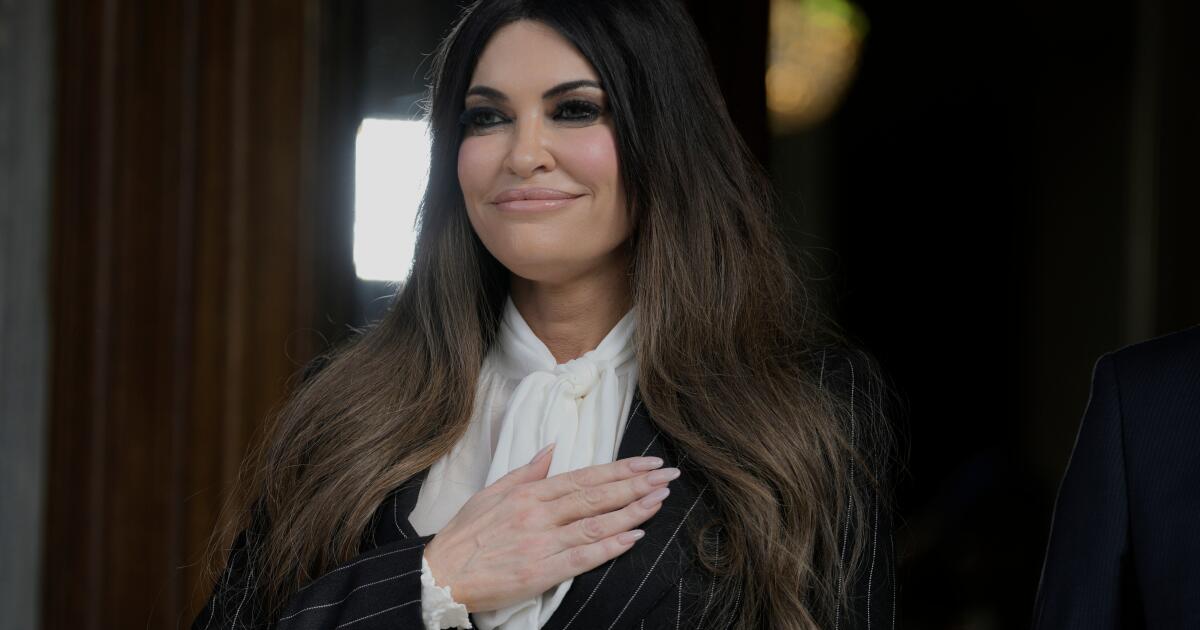Former Fox News host Kimberly Guilfoyle takes up position as U.S. ambassador to Greece
ATHENS, Greece — Kimberly Guilfoyle, a former California prosecutor, television personality and close ally of President Trump, officially took office Tuesday as the first U.S. female ambassador to Greece.
Guilfoyle, 56, who was once engaged to Donald Trump Jr., presented her diplomatic credentials to Greek President Constantine Tassoulas after being sworn in Sept. 29 in Washington.
The former Fox News host’s arrival comes as the United States works to boost liquefied natural gas exports to eastern Europe through Greek port facilities.
U.S. Energy Secretary Chris Wright and Interior Secretary Doug Burgum are expected in Athens this week for talks focused on expanding Western gas exports to war-torn Ukraine through a modified multinational pipeline network.
Guilfoyle and the visiting officials are scheduled to meet with Greek Prime Minister Kyriakos Mitsotakis and attend ministerial meetings organized by the Washington-based Atlantic Council.
Since 2018, Greece and the United States have strengthened military ties, including expanding U.S. access to Greek bases and increased involvement of American defense contractors in Greece’s multibillion-dollar armed forces modernization program.
Guilfoyle attended a black-tie welcome reception over the weekend in Athens. Joined by local business leaders and several Cabinet members, she took part in a lively Greek dance — linking arms with other guests and keeping pace as the music sped up.
“I know we will do amazing things for these two exceptional countries,” she told attendees. “I will not disappoint the United States of America. I shall not disappoint Greece.”
At Tuesday’s ceremony, Guilfoyle presented her credentials after the new ambassadors from Norway, Harriet Berg, and Canada, Sonya Thissen.
